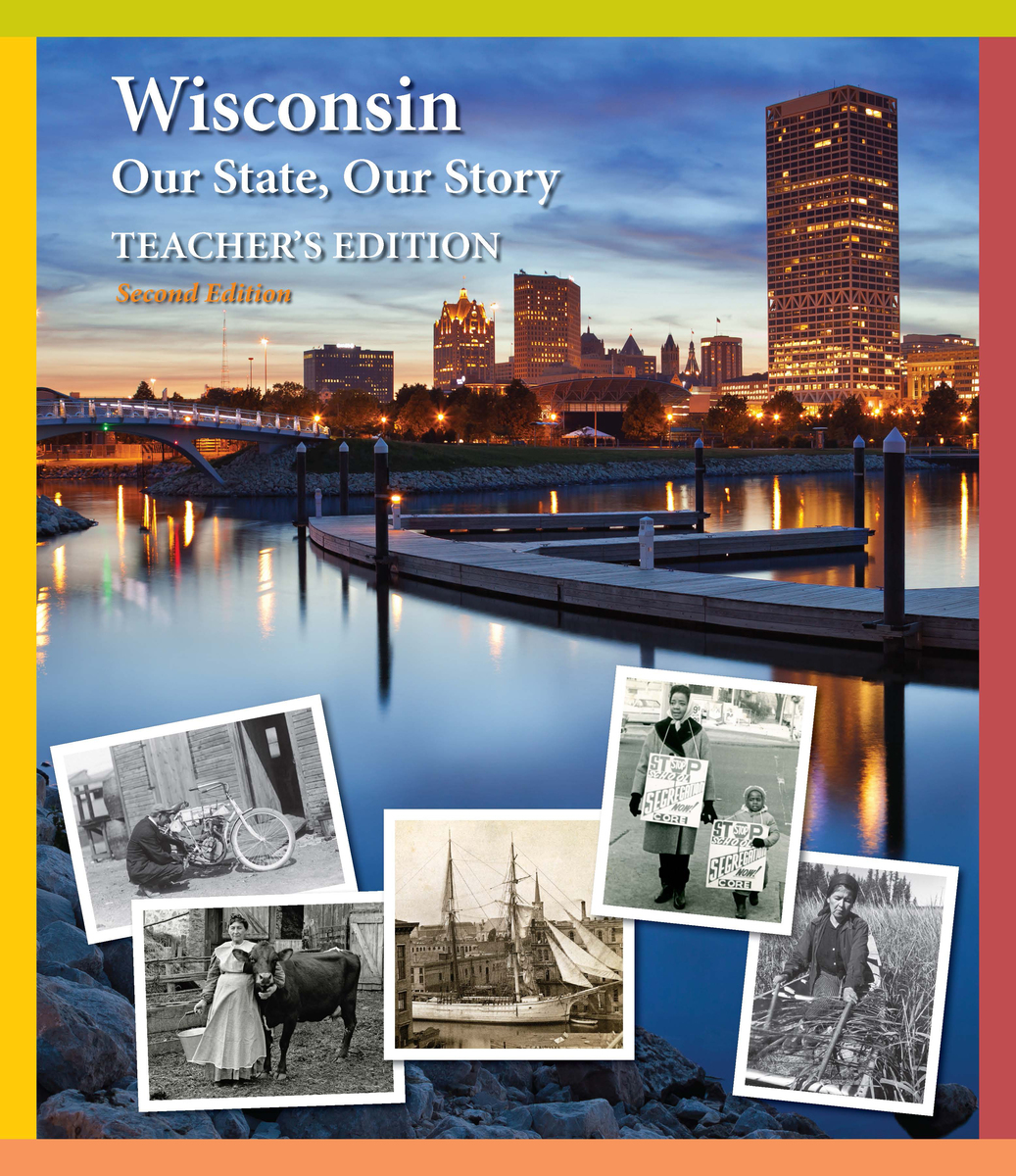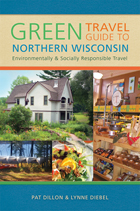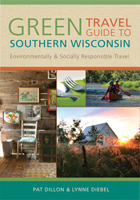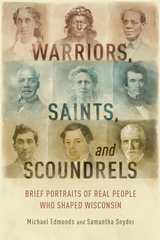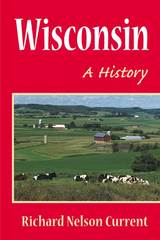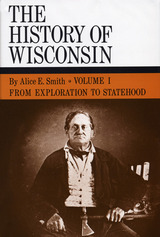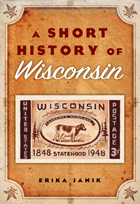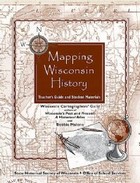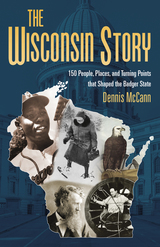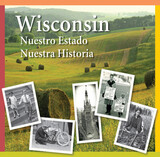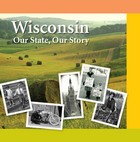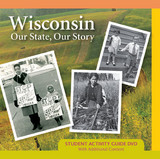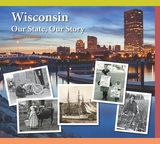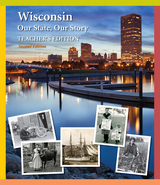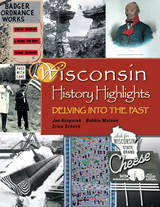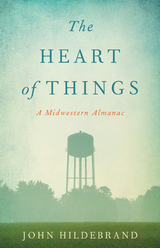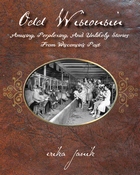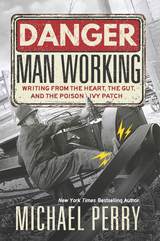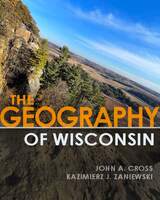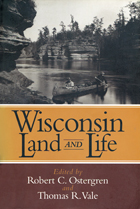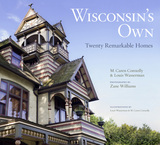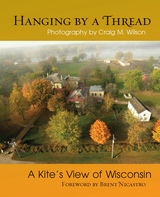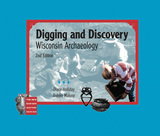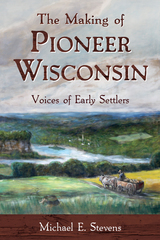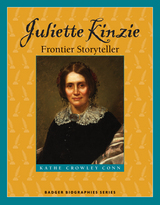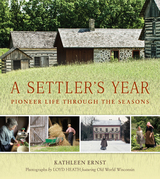Table of Contents
Wisconsin: Our State, Our Story, Teachers Edition
Frontmatter
¿ Table of Contents
¿ Introduction
¿ How to Use Thinking Like a Historian (TLH) by Nikki Mandell
¿ Scaffolding by Doug Buehl
¿ Organizational Chart for Thinking Like a Historian (TLH)
¿ Dictionary of Terms
¿ Meet the authors
¿ Acknowledgements
CONTENTS OF STUDENT TEXT WITH INSTRUCTIONAL MATERIAL IN MARGINS FOR ALL CHAPTERS
Chapter 1: Connecting to Our State¿s Story
¿ Chapter at a Glance
¿ Chapter Introduction
¿ How Do We Tell Our State¿s Story
¿ What Does It Mean to Think Like a Historian
¿ What Kinds of Evidence to Historians Use
¿ How Do Historians Use Evidence to Write History
Chapter 2: Wisconsin: A Place with a Past
¿ Chapter at a Glance
¿ Chapter Introduction
¿ A Landscape Shaped over Time: The Ice Age Trail
¿ Locating Wisconsin in the United States
¿ Locating Wisconsin in the World
¿ Using Longitude and Latitude
¿ What Does Wisconsin Look Like Today
¿ Reshaped by a Long-Ago and Very Cold Past
¿ Glacial Landforms Today
¿ Connected by Water: Wisconsin¿s Waterways
¿ Exploring Wisconsin¿s Five Regions: Identifying the Regions, Lake Superior Lowland
¿ Exploring Wisconsin¿s Five Regions: Northern Highland, Central Plain
¿ Exploring Wisconsin¿s Five Regions: Western Upland, Eastern Ridges and Lowlands
¿ Favorite Places in Wisconsin to Visit
Chapter 3: Wisconsin¿s First People
¿ Chapter at a Glance
¿ Chapter Introduction
¿ Native People Today Celebrate Their History and Traditions
¿ Ways to Discover the Long-Ago Past
¿ Mammoths, Mastodons, and Earliest People
¿ Inventions for a New Age: The Archaic Tradition
¿ People of the Woodland: New Ways of Living and Viewing the World
¿ The Mysterious Mississippian Tradition
¿ Early Wisconsin Farmers: The Oneota Tradition
¿ Communicating in Many Forms
¿ Changes over Thousands of Years
Chapter 4: The Fur Trade Era: Exploration and Exchange in Wisconsin
¿ Chapter at a Glance
¿ Chapter Introduction
¿ Exploring and Learning Today
¿ Native People near the Close of the Old Time
¿ Explorers from Europe Arrive in Wisconsin
¿ Missionaries and Mapmakers
¿ Beavers Mean Business; The French Fur Trade in Wisconsin
¿ Bringing Cultures Together: The Metis Experience
¿ From French to British Control
¿ Same Trade, New Leaders: Americans Take Over
¿ From Forts to Settlement
¿ Changes over Two Hundred Years
Chapter 5: Becoming Wisconsin: From Indian Lands to Territory to Statehood
¿ Chapter at a Glance
¿ Chapter Introduction
¿ Wisconsin Lands Change Hands
¿ Treaty Making
¿ Living on the Lead Frontier
¿ The Black Hawk War
¿ Measuring and Mapping Land to Sell
¿ Wisconsin Becomes a Territory
¿ Wisconsin Becomes the 30th State
¿ What Happens at the Wisconsin Capitol
¿ Looking Back at Our State¿s Beginnings
Chapter 6: They Came to Wisconsin and They¿re Still Coming: Immigration and Settlement
¿ Chapter at a Glance
¿ Chapter Introduction
¿ Immigration and Migration: Then and Now
¿ Making the Journey
¿ A Stonemason in Cornwall, England, Comes to Mineral Point
¿ Free at Last
¿ A German Farmstead in Washington County
¿ From Finland to Bayfield County
¿ Lucky to Be in America
¿ Bringing Texas North to Wisconsin
¿ Mai Ya¿s Long Journey from Thailand to Wisconsin
¿ Looking Back at Immigration and Settlement in Wisconsin
¿
Chapter 7: Wisconsin and the Civil War
¿ Chapter at a Glance
¿ Chapter Introduction
¿ Free States, Slave States, and Fugitive Slaves
¿ Abolitionists in Wisconsin
¿ Those from Wisconsin Who Fought
¿ Wisconsin Goes to War: Two Stories
¿ Wisconsin Goes to War: Lives Changed
¿ Places to Remember the War
Chapter 8: Lead, Soil, and Sawdust, 1820¿1914
¿ Chapter at a Glance
¿ Chapter Introduction
¿ Wisconsin: A Land Rich in Natural Resources
¿ Getting the Minerals Out
¿ Farming to Feed the Family
¿ From One Crop to Many Crops and Many Animals
¿ Learning about Farming in the Past
¿ We Become a Dairy State
¿ From Milking to Marketing
¿ Timber!
¿ From the Woods to the Mills
¿ Lumber, Pulp, and Paper
¿ Learning More about Mining, Farming, and Logging
Chapter 9: Transportation and Industry Change Wisconsin
¿ Chapter at a Glance
¿ Chapter Introduction
¿ Wisconsin¿s Changing Landscape
¿ Shipping by Water: From Schooners to Steamers
¿ Shipping by Land: Railroads
¿ Big Industry Leads to Bigger Cities
¿ The Growth of Milwaukee
¿ Engineers and Entrepreneurs
¿ Comparing and Contrasting Wisconsin¿s Top Industries
¿ A New World for Workers
¿ Progressives and Positive Change
¿ Turning Points in Transportation and Industry
Chapter 10: Good Times, Hard Times, and Better Times
¿ Chapter at a Glance
¿ Changes in Ways of Living
¿ New Century, New Roads
¿ Vacations for Some
¿ Wisconsin Goes to War: World War I
¿ The Great Depression: Looking for Work and Making Do
¿ Wisconsin Goes to War: World War II
¿ People Return to Peace and Work
Chapter 11: New Opportunities, New Challenges
¿ Chapter at a Glance
¿ Chapter Introduction
¿ Wisconsin and the World
¿ Wisconsin Goes to War: Fighting Communism and the Korean War
¿ Suburbs and Interstate Highways
¿ Protecting Our Environment
¿ Organized Sports and Sports Fans
¿ Hunting and Fishing: Wisconsin Traditions
¿ Struggles and Protests for Equal Rights
¿ Wisconsin Goes to War: Vietnam and Protests
¿ Wisconsin Goes to War: The Gulf War and 9/11
¿ Bringing People Together
Chapter 12: A Place with a Future
¿ Chapter at a Glance
¿ Chapter Introduction
¿ Taking Care of Our State¿s Story
¿ Saving Our Places and Our Spaces
¿ Protecting Wisconsin¿s Story
Backmatter
¿ Gradual Release of Responsibility (GRR) Chart
